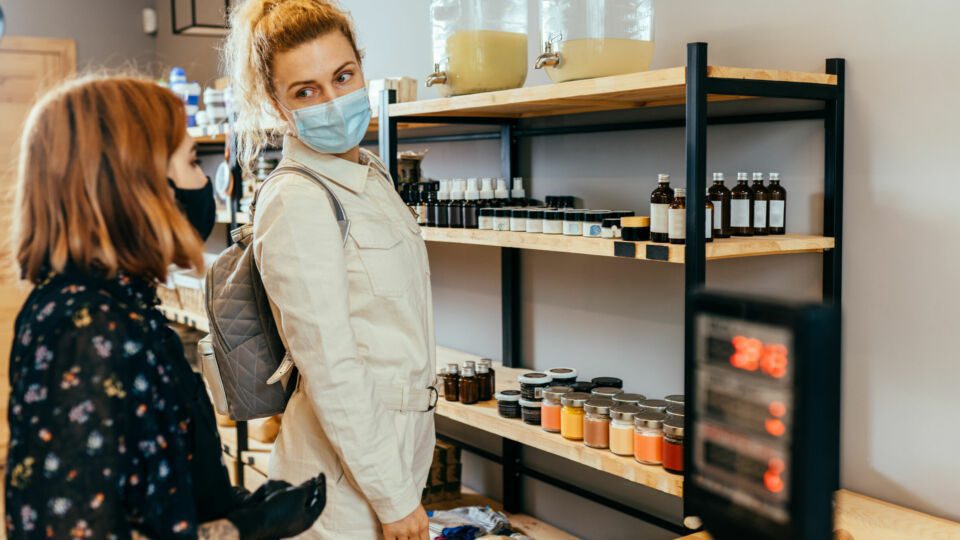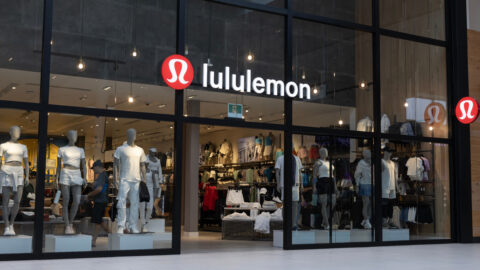Count appointment-based selling as another existing trend that was supercharged by COVID-19. Retailers such as Best Buy and Apple were two of the first to implement the model at scale, showing the value for businesses outside of luxury and specialty retail. And as COVID-19 volatility continues to put retailers and consumers in a frustrating holding pattern, more retail brands are turning to appointments to minimize store traffic and keep social distancing guidelines in place. Yet even beyond these functional benefits, appointment tech can create consistency, transparency and new revenue opportunities.
Even with vaccinations beginning to roll out across the U.S., consumer health concerns still loom, according to survey data from Shopkick. Less than half (48%) of consumers who have already received the vaccine say they feel more comfortable shopping in stores now. Further, 96% of consumers say they will continue to take personal safety precautions while shopping.
“There are some business types — for example large grocery or big box stores — where appointments may not be a requirement in the future,” said Cimarron Buser, President and CEO of the Appointment Scheduling & Booking Industry Association (TASBIA) in an interview with Retail TouchPoints. “But for now, you’re seeing ‘capacity control’ playing a role, and even these businesses are suggesting appointments to manage busy times.”
Appointment-Based Benefits Apply Across Categories
Brands from auto to beauty have embraced appointment-based service to improve shopper satisfaction and maximize revenue opportunities. Buser pointed to Tesla’s “Touchless Test Drive” as a great model that makes appointments the “new default for a zero-contact experience.” He explained: “With the ability to set up a video appointment with a salesperson, this approach allows a very immersive experience that is convenient for the customer — and a good fit with the product.”
While ULTA Beauty doubled-down on its appointment-based services as stores reopened, Lululemon also made headlines for allowing consumers to book appointments to browse before, during or after regular store hours. Even sporting goods and specialty athletic companies are seeing the benefits of appointments, as they allow associates to walk consumers through their preferred activities and make pointed recommendations based on their needs and behaviors.
“Appointments allow you to keep the lights on and effectively schedule staff,” said John Federman, CEO of JRNI in an interview with Retail TouchPoints. “It also keeps the staff more productive. If an associate can spend time with someone with a high propensity to buy, they can use their time more effectively. It supports the consultative experience that’s a definer for how consumers want to be treated.”
An omnichannel appointment system is especially valuable as more brands and retailers expand their assortment of in-store and digital services. For example, BHLDN can support styling appointments and fittings in stores and online. When COVID-19 first hit, the bridal dress, accessories and wedding décor retailer needed to bring the expertise from its 23 stores to the virtual world.
“Wedding attire, especially bridal gowns, are highly considered purchases which require an elevated level of personal attention and highly trained sales associates,” said Lori Conley, General Merchandise Manager for BHLDN in an interview with Retail TouchPoints. “As the pandemic worsened, we realized immediately that we needed a way to bridge our in-person business model to a seamless virtual experience, and needed a dynamic appointment solution to help us.”
JRNI Appointments helps automate the BHLDN appointment scheduling process, making it easy for associates to book meetings across all channels. Consumers also have the flexibility to book virtual appointments with local stores. Conley noted that this allows customers to “later continue their shopping journey with a friendly face or leverage our national pool of stylists.”
Most importantly, the new system allows consumers to share insights into their needs, goals and preferences prior to the appointment, which helps associates successfully prepare and better serve their clients.
“The focused attention of our best-in-class stylists truly help ensure that a virtual appointment still feels personal and intimate,” Conley explained. “Our stylists prep before all appointment types — whether they’re in person or virtual. They take the time to review ‘favorited’ styles, view her shared Pinterest boards, and read her questionnaire answers to really understand her vision. When our client shows up for her appointment, she gets an immediate sense that her stylist understands her aesthetic and can recommend styles and finishing touches to bring her wedding look to life.”
Are Appointments in Your Future? 4 Keys to Success
Like any new technology investment, retailers need to think critically about the role, and potential value, of appointment setting. Should they decide to move forward, they also should think about the role that appointments play in the omnichannel journey. Experts offered these four recommendations to help retailers make the right decisions:
- Make sure it’s a fit for your brand: “Brands and retailers must determine if the in-store appointment-based model is truly adding value to the shopping experience in a post-COVID environment,” said Dave Fisch, General Manager of Shopkick. “For it to be the right approach, it would need to surpass other conveniences that have taken over in the past year, such as online shopping with fast shipping or BOPIS.”
- Adapt your spaces accordingly: Buser noted that “evaluation of the space is critical,” whether retailers are using appointments to manage BOPIS, improve tech support and service or support clienteling experiences. “Is there enough area for people to wait if there needs to be an ‘entry’ to the premises? Is the store limited in space? Ultimately, the customer must feel at ease within the space, or they will be reluctant to return.”
Space design is especially crucial for apparel retailers that want to drive cross-sells and upsells, according to Georganne Bender, who is Principal at Kizer & Bender Speaking. “If I make an appointment to meet with a personal shopper I expect to be taken to a special area with a plush fitting room, good lighting, and a place for family or friends to comfortably wait while I try on clothes.” - Integrate your systems: In order to successfully prepare for in-store and virtual appointments, associates need far more than context into daily schedules; they also need access to rich customer data. While past purchases and loyalty information are helpful, knowing what customers are interested in and what their needs are sets associates up for success. To execute flawlessly, the appointment experience needs to integrate with all other systems.
“Companies need cloud systems with omnichannel capabilities that integrate with martech, order management systems, and other technologies,” said Shannon Colquhoun, VP of Retail, Ecommerce and Consumer Goods at Talkdesk. “Retailers need to supply both contact center agents and in-store associates with consistent customer information through a centralized platform. Agents and associates also need new training for appointment-retailing best practices, which is where Workforce Engagement Solutions can help.”
Integration with marketing systems also helps create a consistent conversation flow with customers before, during and after appointments, which helps them have a better overall experience. - Rethink KPIs: Footfall is a challenge for all retailers as social distancing guidelines remain in force. However, as retailers roll out dedicated appointment-based models, more accurate measurements will more about quality (in terms of customer interactions and eventual sales) than quantity. That means retailers will need to rethink the metrics they use to gauge store performance and associate success. Génesis Miranda Longo, Manager of Industry Marketing for Retail, Ecommerce & Consumer Goods for Talkdesk, pointed to average time in-store, average wait time, return rates and overall customer satisfaction as the top metrics to zero in on.
Expanded Appointment Use Cases Point to Potential Longevity
COVID-19-related use cases and success stories point to the potential for an increasingly appointment-based future, but the jury is still out regarding whether the trend has long-term staying power.
Buser believes that, like the hordes of consumers who first shopped online during lockdowns, some consumers who experience an “all-appointment model” for the first time may become lifelong converts. These customers “may realize that the ease and convenience are better than a ‘walk in’ model, which will make this feature a must-have for all kinds of businesses.”
Conversely, Bender believes that the model is too niche to be applied to all retail businesses. “Shopping by appointment works for Apple when we need the expertise of a Genius, and it works at some high-end designer stores because one-on-one attention is part of the ambiance that attracts luxury shoppers,” Bender said “But for most retailers it’s just not a good idea. Being required to make an appointment is overkill for customers who have a tech question that likely could be answered by an associate on the sales floor.”
However, tech players such as JRNI are seeing appointment-setting use cases expand beyond in-store customer service and engagement, which is helping validate the value of investment. For example, some companies used the same technology to avoid “crowding in a line,” Buser explained. “Queuing systems notify someone when they can enter a location (usually through a text notification). We’ve seen these systems before; think about restaurants where you get a ‘buzzer.’ The use case, however, has expanded to many types of businesses.”
Many retailers also are using appointment scheduling tech to better manage store traffic flows for BOPIS orders and curbside pickup. Associates can better balance their ever-expanding task list, which now includes picking and packing online orders and running them out to cars. Customers also get a better experience when appointment-based solutions keep parking lot traffic and store crowds manageable.













